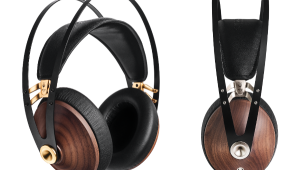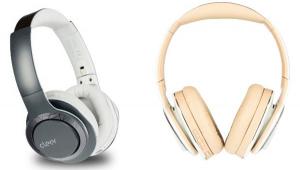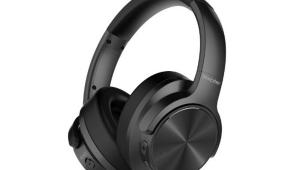Review: TDK Life on Record EB950, BA100, and BA200 Earphones Page 2
Measurements
I measured the EB950, BA100, and BA200 using a G.R.A.S. Type RA0045 ear simulator, a Clio FW audio analyzer, and a Musical Fidelity V-Can headphone amplifier. I used supplied medium-sized silicon tips, which fit the ear simulator best. I inserted and reinserted each model several times, and settled on a position for each that gave the most representative result.
The three models show some family resemblance in their frequency response measurements, all of which have a peak in the 2.5 to 3 kHz region. In fact, the BA100 and BA200 have very similar frequency response plots, with the BA100 perhaps just a tad bassier. The EB950 isn’t actually bassier than the other two models, but it has a rather depressed midrange that probably makes it sound bassy.
Surprisingly, although the impedance of the EB950 varies a lot with frequency, the earphone’s response didn’t vary significantly when I added 70 ohms output impedance to the V-Can’s 5-ohm output impedance to simulate the effects of using a low-quality headphone amp. However, driving the BA100 and BA200 from the 75-ohm output impedance made the BA200 about +2 dB more bass-heavy and the BA100 about +4 dB more bass-heavy.
Distortion at 100 dB (level measured with pink noise, A-weighting) is very low for the EB950 and BA200, but rather high for the BA100. The EB950 hits its total harmonic distortion (THD) peak at 3.3% at 450 Hz, but drops to a very low 0.6% at 20 Hz. Compare that to the BA100, which hits 3.9% THD at 1 kHz, 8.4% THD at 100 Hz and 10.6% THD at 20 Hz. (It’s worth noting, though, that no panelist complained about distortion with any of these earphones.) The BA200 shows an unusual increase in THD in the midrange, but it’s to just 2.5% at 1.2 kHz—an impressive result for a 100 dBA measurement.
The EB950 exhibits a major impedance swing at frequencies above 1 kHz, starting from 42 ohms at 100 Hz and rising to 575 ohms at 20 kHz. However, the BA100 has an almost dead-flat impedance of 16 ohms. The BA200 has a flat impedance of 27 ohms at low frequencies, with a mild, broad rise to 45 ohms at 1.3 kHz, then dipping and rising again to 60 ohms at 20 kHz.
I achieved excellent isolation measurements for the EB950 and BA100; both reduced exterior sounds by about -20 dB at 100 Hz, and typically -30 to -50 dB above 500 Hz. However, my results were nowhere near as good with the BA200, probably because its design doesn’t allow the tip to go as far into the ear canal (or the ear simulator). With the BA200, reduction runs about -10 to -20 dB from 150 to 700 Hz, and -20 to -35 dB from 700 Hz to 10 kHz. Isolation results will vary with the tips you choose, the shape of your ear, and how tight of a fit you like.
Average sensitivity from 300 Hz to 10 kHz with a 0.179 volts RMS signal is 101.0 dB for the EB950, 105.5 dB for the BA100, and 105.6 dB for the BA200.
Do we have a winner?
Among the three IEMs, sure — the panelists agree that the BA100 is by far the standout in this group. As long as your ear canals are either small or mid-sized, we’re pretty confident that you’ll get fantastic sound from the BA100, and we can strongly recommend it — especially at the $95 price it’s now selling for on Amazon. Still, we don’t recommend it for active use. It’s best-suited for situations where you’ll be staying put, such as on an airplane, bus, or train.
Among the three technologies, though, there’s no clear winner. If anything, our test shows that other elements of product design — specifically, the basic configuration. the voicing, and the fit — can have as big an effect on IEM sound as the technology used to produce that sound.
- Log in or register to post comments


































































